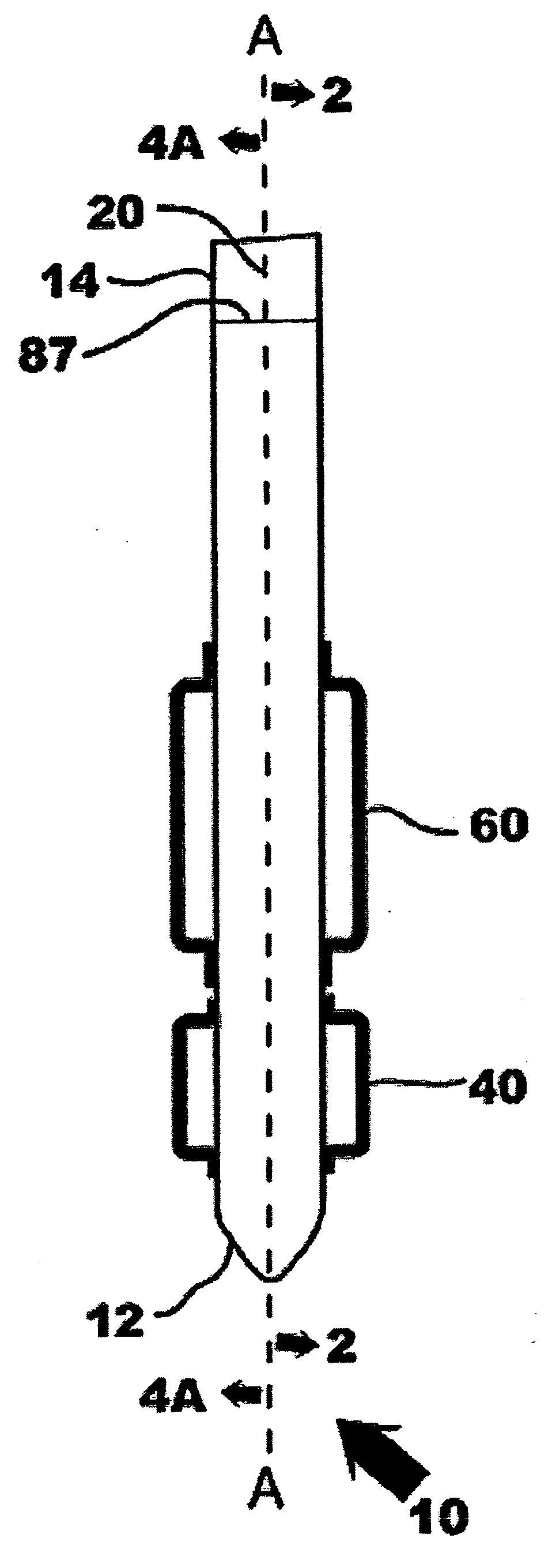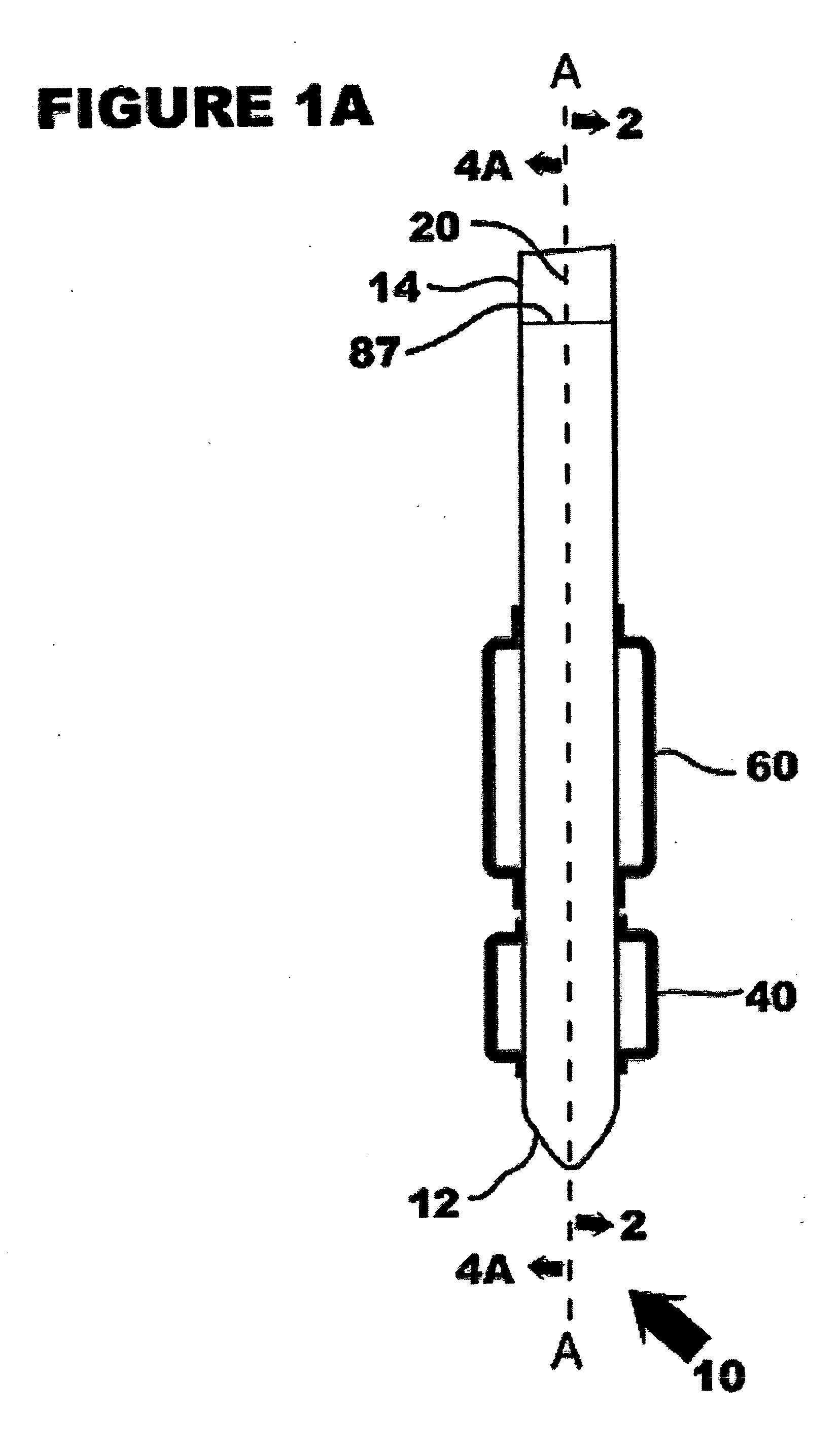They do not retain well-defined shapes, though, and cannot be used to exert
high pressure in medical applications.
Gutnick, however, is limited by the combination of the
structural material of the dilating member being elastic and the inflation process of supplying a controlled volume of liquid to the elastic dilating member to produce an inflated
diameter of the elastic member which is stated in one example as “about somewhat greater than 10 mm and preferably. expand up to about 15 mm.” Thus, the structure of the Gutnick elastic dilating member and the inflation process thereof is limited in its ability to accurately produce a specific or controlled desirable maximum inflation diameter.
The Gutnick method to determine the diameter of inflation relative to a given volume is not directly measured and thus is highly subjective, vulnerable to varying lengths of conduits and fluid losses and is therefore also vulnerable to being overly expanded and damaging the
cervix.
This can result in a partial or an uneven dilation of the
cervix because the combination of the length of the second inflatable member relative to its placement in the
cervix can be too short to adequately treat all cervixes.
Finally, the disc member limits the
visualization of the positioning of the
dilator into the cervical canal adding further risk of harm to the patient.
Levine is limited by its inability to dilate the cervical opening beyond the diameter of the shaft.
In addition, the limited range of the
angle of inclination of the distal end between 15 and 25 degrees also inhibits the flexibility in which Levine can be applied due to natural variations in the orientation of the cervix to the axis defined by the
vagina.
In addition, the balloons or first inflatable member and second expandable member lack the ability to provide an indication as to how much
compressive pressure they are applying against the cervix while securing the shaft.
The ability of the
metal rod to penetrate beyond the tip of the shaft and damage the
uterus also presents a potential safety
hazard.
The ability of the
ripening device of Cowan to provide uniform pressure along the length of the cervix in all situations is questionable.
The application of this shape of device may unevenly dilate the cervix by over dilating the edges and under dilating the central portion.
Under dilating can complicate the passage of instruments.
Uneven dilation can cause discomfort to the patient and damage to the cervix.
Further, the shape of the
balloon inhibits the ability of the physician to monitor the amount of dilation being achieved by the device.
Overly dilating the cervix can cause damage to the cervix.
Despite historical uses of inelastic balloons in
medicine, there have been limitations in the use of these balloons for dilation of the cervical canal.
For this reason, a single balloon for dilation, such as those used in
angioplasty, are ineffective, resulting in a potential to either insert the
catheter too far, causing damage to the uterus, or fail to dilate the full length of the cervix, if the catheter is not placed far enough into the cervix.
Prior attempts to overcome this lack of
visualization through the use of multiple balloons or unique balloon shapes have been limited by the unique problems with
cervical dilation occurring because there is more resistance to dilation of the internal os (portion of the cervical canal adjacent to the uterus) which is furthest from the operator, than the portion of the cervix closer to the
vagina.
The unequal resistance tends to push a balloon out toward the
vagina, so patients may not have their inner os properly dilated.
The inelastic ellipsoidal balloon is intended to act as an anchor and to dilate the internal os, but use of an ellipsoidal balloon to inflate the internal os may result in an overdilation of the internal os, risking damage to the cervix including an incompetent cervix (a cervix unable to remain closed for a
fetus causing
miscarriage).
If the ellipsoidal balloon is used as an anchor for positioning, use of this design results in under-inflation of the inner os because inelastic balloons have a taper to allow the folding of the balloon when deflated.
The taper of the balloons results in a set gap between the two balloons at the point of the inner os, resulting in an under-inflated portion of the cervix.
Another problem encountered with the use of inelastic balloons is that the balloons tend to be fragile.
These instruments can damage the balloons leading to balloon rupture.
One reason for this is that the primary procedure is
angioplasty, where the use of air would risk the release of a potentially life-threatening air
embolus if the balloon ruptured.
 Login to View More
Login to View More  Login to View More
Login to View More 


